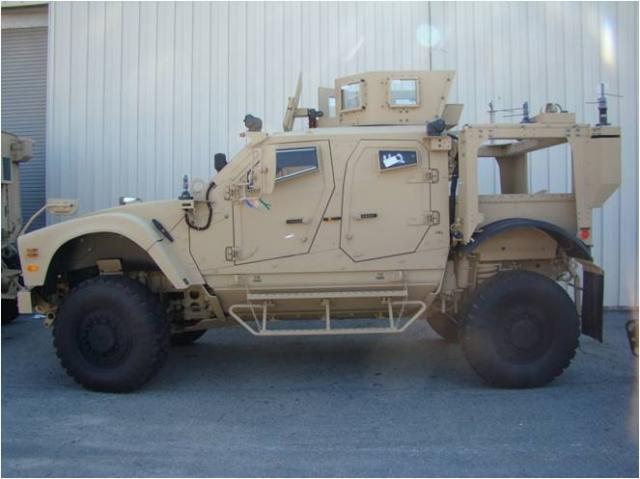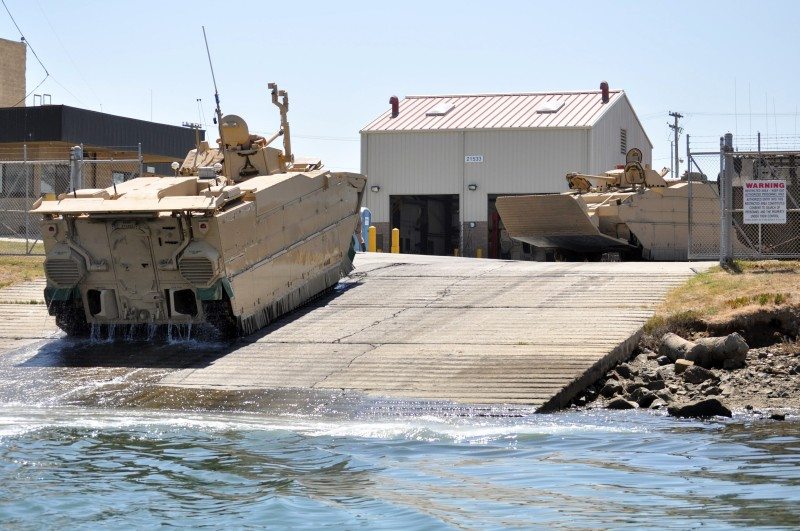New ambulances designed to negotiate Afghanistan’s rough, narrow roads, kits that quickly convert standard combat vehicles for casualty evacuation, and state-of-the-art field medical packages are improving battlefield medicine and saving lives, an official involved in developing and fielding the new equipment reported.
“What we are doing is getting better technology far forward to the wounded, and as a result, we are seeing a decrease in mortality,” Jaime Lee, a product manager at the U.S. Army Medical Materiel Development Activity’s Medical Support Systems Division, told American Forces Press Service.
“We have improved getting care to the Soldier in that far forward area, and getting it to him in that ‘golden hour;’ that first hour after he has been wounded,” he said.
Defense Secretary Robert M. Gates has pressed hard for the past two years to bring medical care in Afghanistan in line with what’s available for U.S. troops in Iraq. This includes medevac capabilities that ensure wounded troops get advanced medical care within one hour of their injury, which is a factor that medical experts agree makes a major difference in survival rates.
The Army Medical Materiel Development Activity has been hard at work supporting that initiative, with several new projects under way to support joint urgent requirements identified in the combat theater, Lee said.
One, developed in cooperation with the mine-resistant, ambush-protected, all-terrain-vehicle program office, is an M-ATV-like ambulance specifically designed to traverse Afghanistan’s demanding terrain. The first 250 are scheduled to go into production this summer and are expected to be fielded this fall, Lee reported.
Unlike the mine-resistant, ambush-protected, or MRAP, ambulances in Afghanistan that were designed to operate in Iraq, the M-ATV-like versions are being built from the ground up for conditions in Afghanistan. They have improved suspension systems and offer more mobility and speed than the MRAP models.
Each of the new ambulances is designed to hold two litter patients and several ambulatory patients, Lee said. It’s equipped with state-of-the-art field medical supplies organized according to injury, including breathing problems, bleeding, hypothermia and broken bones.
Unlike in the past, when medics always had to organize their own supplies, the components for the new ambulances arrive in the theater ready to use.
“What we have done here is take a whole bunch of subject matter experts and configure it to a standard format,” Lee said. “Now, when the medic gets it, he pulls it straight out of the box, hangs it up and is ready to go. He knows exactly where everything is.”
The medical kit bag hangs inside the ambulance, but because its components are attached using fabric fasteners, medics can easy pull them off when necessary to treat patients outside the vehicle, Lee said.
The M-ATV-like ambulance includes another first: an oxygen concentrator that creates medical-grade oxygen from ambient air. The benefit is two-fold, Lee explained. Gone are the bulky oxygen tanks that, if hit by a fragment, could turn into a projectile and kill passengers in the vehicle. The oxygen concentrator also eliminates the logistics burden of having to refill oxygen bottles in the combat theater.
But in cases where an ambulance isn’t on the scene to evacuate a wounded warrior immediately, troops now are gaining a new “scoop and run” capability to get the casualties to advanced-level care more quickly.
The Army Medical Materiel Development Activity helped to develop a new casualty evacuation, or CASEVAC, kit that converts any M-ATV into an ad-hoc casualty evacuation platform within a matter of minutes. Each portable kit contains two spine boards with restraint systems and litter straps to transport wounded warriors to the vehicle. Troops can then use their personal first-aid kits to begin initial care while transporting the casualty transported to an evacuation point.
The goal, Lee said, is for every M-ATV in Afghanistan to be equipped with the new kits. About 300 were delivered last year, with another 1,800 expected to be delivered this summer.
“This will have a significant impact on the force and will really help to evacuate casualties,” Lee said.
In recognition of their work in developing these much-needed capabilities, Lee and the rest of the Army Medical Materiel Development Activity’s Medical Support Systems team received the 2010 National Security and International Affairs Medal. The award recognizes federal employees for significant contribution to the nation in activities related to national security and international affairs.
“In my opinion, the work that [the Medical Systems Support Division] does has been absolutely critical to our military’s mission in Iraq and Afghanistan,” said Col. Russell E. Coleman, commander of USAMMDA, who nominated them for the award. “The CASEVAC and medical evacuation capabilities that they have fielded have saved the lives of many of our deployed servicemembers, and it is an accomplishment worthy of recognition.”











